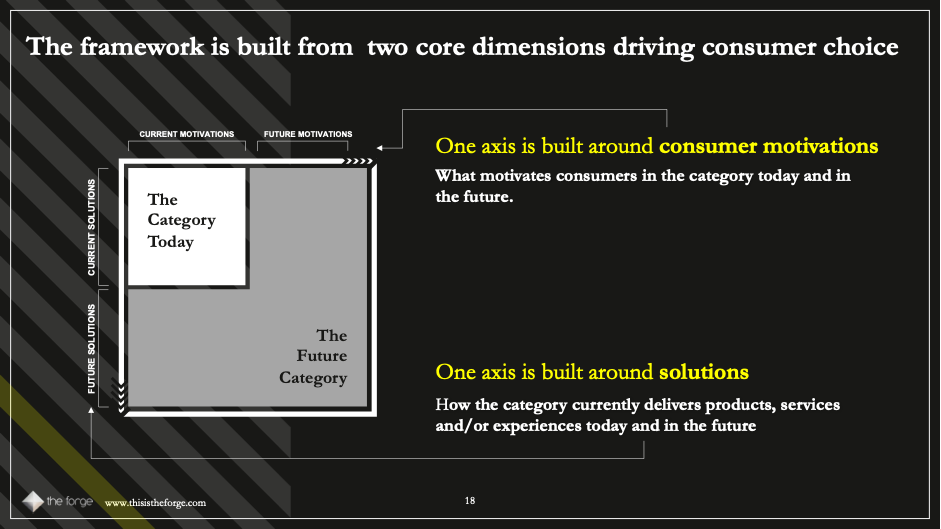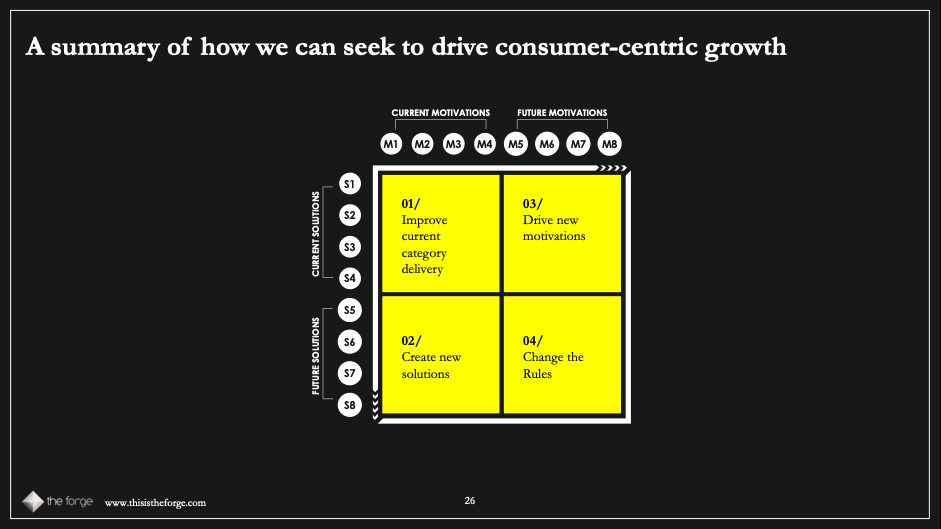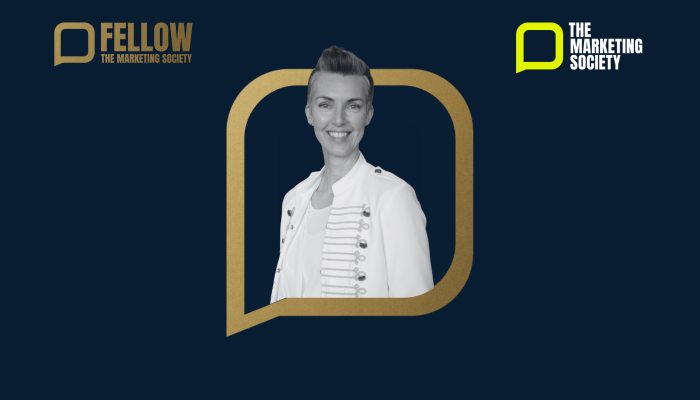In last month’s Empower publication we discussed the importance of businesses facing into post-lockdown challenges by doing ‘fewer, bigger, better’. If you haven’t yet had a chance to listen to the Podcast that inspired the piece, then you can find it here.
At the heart of the discussion is an exploration of the things that get in the way of pursuing a focused agenda; everything from politics to ‘shiny new toy’ syndrome. Having examined and interrogated WHY it can be difficult for businesses to prioritise, we thought it would be helpful to follow up with a piece on HOW they can get better at it.
Introducing the Big Framework for Growth (BFG).
The BFG is a proprietary Forge framework that we use to help our clients focus and prioritise when thinking about how to grow. It helps businesses identify where there are opportunities for growth, whilst flagging future risks and dangers. We have been using this framework for a number of years with clients including Unilever, VF Corp and Zurich, but it has become particularly relevant in the context of the pandemic.
The great thing about the BFG is its simplicity and flexibility. At its heart it is a customer-centric framework, based on the intersection between two drivers of consumer choice, i) Motivations - the desires that consumers have to do or achieve something, and ii) Solutions – the products, services and experiences available to fulfil those motivations. When you map these axes against each other, you can break down the growth challenge into addressable, bite-sized chunks.

The flexibility of the framework is also partly derived from the way it can be populated and deployed. The Motivations axis is typically informed by analysis of existing data sets, bespoke quant surveys, data modelling, qual depths/groups, social media analysis and segmentations.
The Solutions axis looks at usage and trend-sources, in and beyond the category, e.g., ethnographic approaches, market trawls, trends, R&D roadmaps, technology & emergent IP etc. Often, our clients have much of this data inhouse so the model requires little fresh research.
So how does the BFG actually work?
To answer that let’s explore the four quadrants that sit within the framework.

01/ Improve current category delivery
In this quadrant, growth is achieved by identifying opportunities to better deliver against the current category dynamics through the deployment of improved solutions, or by more effectively targeting priority or valuable motivations.
Fever Tree did this when it seized upon the growing motivation for increased provenance, flavour sophistication and premiumisation in gin and brought enhanced quality and botanicals to a previously moribund category. Heineken 0.0 has done this too. The motivation to have a non-alcoholic beer has been around for decades but Heineken were among the first to bring a solution to market that delivered on taste.
02/ Create new types of solution
This type of growth is achieved by meeting existing motivations with new and improved solutions.
Purplebricks, the online estate agent is still tapping into the need for sellers to achieve the best price for their house, it’s just offering a more innovative and cost-effective way of doing it. Zendium the natural antibacterial toothpaste is still addressing an existing motivation for better oral health; it’s just doing it in a way that works in harmony with your own microbiome.
03/ Drive new motivations
In this third quadrant growth is achieved by delivering to new motivations, helping to evolve what the category can do for people.
Rapha the high-end cycling apparel business met a new motivation for wealthy middle-aged people to look good and perform on their road bikes. Dettol Laundry simply took the antibacterial trend that already existed in adjacent categories and encouraged its adoption in Laundry. Both of these examples illustrate how you can evolve a category by delivering to new motivations.
04/ Change the rules
The final quadrant is the realm of genuine disruption. A step change in the way a category operates. Where new motivations are combined with new solutions.
Nike+ met the emerging motivation for personalised fitness tracking and coaching with new technology that could be integrated into your training shoe. Tesla changed the rules of the whole automotive category. It offered a unique combination of performance and eco-benefits, delivered without the need for a conventional dealership network. No-one realised they wanted this unique combination of benefits until Tesla decided to deliver them.
By breaking down the growth challenge into clearly addressable quadrants, the BFG helps you to identify where and how behaviour is changing and focus your efforts on the things that really influence where consumers decide to spend their money.
Want to learn more?
And as we mentioned earlier, depending on your appetite and situation, the BFG can become a fully validated commercial document with sized opportunity spaces, growth trends, overlaid with brand heartlands and territories, providing a robust map of the fewer, bigger, better bets to make for the future growth of your business.
More on the BFG can be found here. Find out more about how we work at The Forge in our whitepaper: How To Create A Winning Customer Strategy



